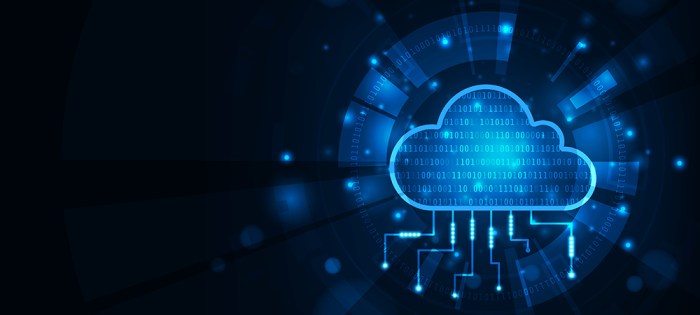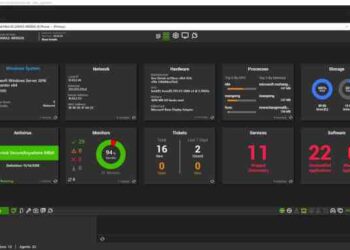In the realm of Managed Service Providers (MSPs), the utilization of cloud-based remote monitoring and management software has become paramount. This introductory passage invites readers with a blend of expertise and creativity, ensuring an immersive and informative journey ahead.
The subsequent paragraph will delve into the intricacies of this innovative software solution, shedding light on its significance and impact.
Introduction to Cloud-Based Remote Monitoring and Management Software for MSPs
Cloud-based remote monitoring and management software for Managed Service Providers (MSPs) is a crucial tool that allows MSPs to monitor, manage, and secure their clients' IT infrastructure from a centralized location. This software enables MSPs to remotely access and control devices, proactively monitor network performance, track security threats, and automate routine tasks.
Benefits of Using Cloud-Based Solutions for Remote Monitoring and Management
- Scalability: Cloud-based solutions can easily scale up or down based on the MSP's needs, allowing for flexibility in managing a growing client base.
- Cost-Effectiveness: By eliminating the need for on-premises hardware and maintenance costs, cloud-based solutions offer a more cost-effective option for MSPs.
- Remote Accessibility: With cloud-based software, MSPs can securely access and manage client networks from anywhere, improving efficiency and reducing response times.
- Automatic Updates: Cloud-based solutions typically receive automatic updates, ensuring that the software is always up-to-date with the latest features and security patches.
Popular Cloud-Based Software Used by MSPs
- ConnectWise Automate:Formerly known as LabTech, ConnectWise Automate is a comprehensive RMM solution that offers automation, monitoring, and management capabilities for MSPs.
- Kaseya VSA:Kaseya VSA is another popular cloud-based RMM tool that provides remote monitoring, management, and automation features to help MSPs streamline their operations.
- NinjaRMM:NinjaRMM is a cloud-based platform that offers remote monitoring, patch management, and IT automation tools to help MSPs deliver proactive IT services to their clients.
Features and Functionality

Remote monitoring and management software play a crucial role in the operations of MSPs, allowing them to efficiently oversee and maintain their clients' IT infrastructure. When it comes to cloud-based solutions, certain key features set them apart from traditional on-premise systems, enhancing the capabilities of MSPs.
Key Features of Cloud-Based Remote Monitoring and Management Software
- Centralized Dashboard: Cloud-based software provides a centralized dashboard that allows MSPs to view and manage all client systems from a single interface, streamlining operations.
- Automated Alerts and Notifications: These solutions offer automated alerts and notifications for potential issues, enabling MSPs to proactively address problems before they escalate.
- Remote Access and Control: Cloud-based systems enable remote access and control of client devices, facilitating quick troubleshooting and issue resolution without the need for physical presence.
- Scalability and Flexibility: Cloud-based solutions are highly scalable and flexible, allowing MSPs to easily adjust resources based on client needs without the constraints of physical hardware.
- Security and Compliance: These systems often come with built-in security features and compliance tools to ensure data protection and regulatory adherence for both MSPs and their clients.
Comparison with Traditional On-Premise Systems
- Cost-Efficiency: Cloud-based solutions eliminate the need for costly hardware investments and maintenance associated with traditional on-premise systems, leading to cost savings for MSPs.
- Accessibility: Cloud-based software offers anytime, anywhere access to monitoring and management tools, providing greater flexibility compared to on-premise solutions that may require physical presence for maintenance.
- Real-Time Monitoring: Cloud-based systems enable real-time monitoring of client systems, ensuring immediate detection of issues and prompt resolution, which can be challenging with on-premise setups.
- Automatic Updates: Cloud-based solutions often come with automatic updates and patches, ensuring that MSPs are always equipped with the latest features and security enhancements without manual intervention.
Enhancing MSP Operations and Efficiency
Cloud-based remote monitoring and management software significantly enhance MSP operations by offering streamlined workflows, proactive issue resolution, and improved client satisfaction. These features empower MSPs to deliver high-quality services efficiently, stay ahead of potential problems, and scale their operations effectively to meet growing client demands.
Implementation and Integration
When it comes to implementing cloud-based remote monitoring and management software in an MSP setting, there are several key considerations to keep in mind. From addressing challenges to ensuring a seamless transition, the process requires careful planning and execution.
Challenges and Best Practices
- One of the main challenges in integrating cloud-based solutions with existing MSP infrastructure is ensuring compatibility and smooth operation between the two systems.
- Best practices include conducting a thorough assessment of current infrastructure, identifying potential integration points, and creating a detailed implementation plan.
- It is important to involve key stakeholders from both the MSP and the software provider to ensure a successful integration and address any issues that may arise.
Tips for a Seamless Transition
- Start by clearly defining goals and objectives for the transition to cloud-based systems, outlining the expected benefits and outcomes.
- Provide comprehensive training for MSP staff to ensure they are familiar with the new software and understand how to leverage its features effectively.
- Consider conducting a phased implementation approach to minimize disruptions and allow for testing and adjustments along the way.
Security and Compliance
In the realm of cloud-based remote monitoring and management software for MSPs, security and compliance are critical aspects that cannot be overlooked. Ensuring the protection of sensitive data and adhering to industry regulations are paramount for the success and credibility of managed service providers.
Importance of Security Measures
Implementing robust security measures in cloud-based remote monitoring and management software is essential to safeguarding confidential information and preventing unauthorized access. Encryption protocols, multi-factor authentication, regular security audits, and intrusion detection systems are some of the key features that help mitigate security risks.
Common Security Risks
- 1. Data Breaches: Unauthorized access to sensitive data can result in severe consequences for MSPs and their clients.
- 2. Malware Attacks: Cloud solutions are susceptible to malware infections that can compromise the integrity of the software and data.
- 3. Account Hijacking: Weak passwords or lax security practices can lead to account hijacking, exposing confidential information.
- 4. Insider Threats: Employees or third-party vendors with access to the system pose a risk of intentional or unintentional data breaches.
Compliance Requirements
- 1. GDPR Compliance: MSPs operating in the European Union must adhere to the General Data Protection Regulation to protect the privacy and rights of individuals.
- 2. HIPAA Compliance: MSPs serving healthcare clients need to comply with the Health Insurance Portability and Accountability Act to ensure the security and confidentiality of patient information.
- 3. PCI DSS Compliance: MSPs handling payment card data must follow the Payment Card Industry Data Security Standard to secure cardholder information.
Cost Analysis and ROI
In the realm of cloud-based remote monitoring and management software for MSPs, understanding the cost factors and return on investment (ROI) is crucial for decision-making. Let's break down the costs involved, explore how MSPs can calculate ROI, and delve into the long-term benefits of cloud solutions.
Cost Factors of Adopting Cloud-Based Software
- Subscription fees: MSPs typically pay a monthly or annual subscription fee for cloud-based software, which can vary based on the number of endpoints or features included.
- Training and implementation costs: Initial training for staff and the integration of the software into existing systems may require additional investment.
- Scalability and customization: Costs may increase as MSPs scale their operations or require customization of the software to meet specific needs.
Calculating ROI for Cloud Solutions
- ROI formula:
ROI = (Net Profit / Cost of Investment) x 100
- Quantifiable benefits: MSPs can measure ROI through factors like increased efficiency, reduced downtime, and improved client satisfaction.
- Comparative analysis: Comparing the costs and benefits of cloud solutions versus traditional on-premise systems can help determine ROI.
Cost-Saving Benefits and Long-Term Advantages
- Reduced infrastructure costs: Cloud-based software eliminates the need for costly hardware and maintenance, leading to significant savings.
- Enhanced security and compliance: Cloud solutions often come with built-in security features and compliance measures, reducing the risk of data breaches and non-compliance penalties.
- Improved scalability and flexibility: MSPs can easily scale their operations up or down based on demand without incurring additional infrastructure costs.
Final Wrap-Up
As we conclude our exploration of cloud-based remote monitoring and management software for MSPs, we reflect on the key points discussed, leaving readers with a profound understanding of its benefits and implications.
Quick FAQs
What are the key benefits of cloud-based remote monitoring and management software for MSPs?
Cloud-based software offers enhanced flexibility, scalability, and accessibility, allowing MSPs to efficiently monitor and manage systems remotely.
How can MSPs ensure security when using cloud-based solutions?
MSPs should implement robust security measures such as encryption, access controls, and regular security audits to mitigate risks associated with cloud-based software.
What cost-saving benefits can MSPs expect from adopting cloud-based systems?
By transitioning to cloud-based solutions, MSPs can reduce infrastructure costs, improve operational efficiency, and achieve long-term savings through scalable pricing models.




![Top 10 RMM Solutions [2024] | NinjaOne](https://ecommerce.mardinata.com/wp-content/uploads/2025/10/Best-RMM-Software-and-Tools-1-120x86.jpg)




